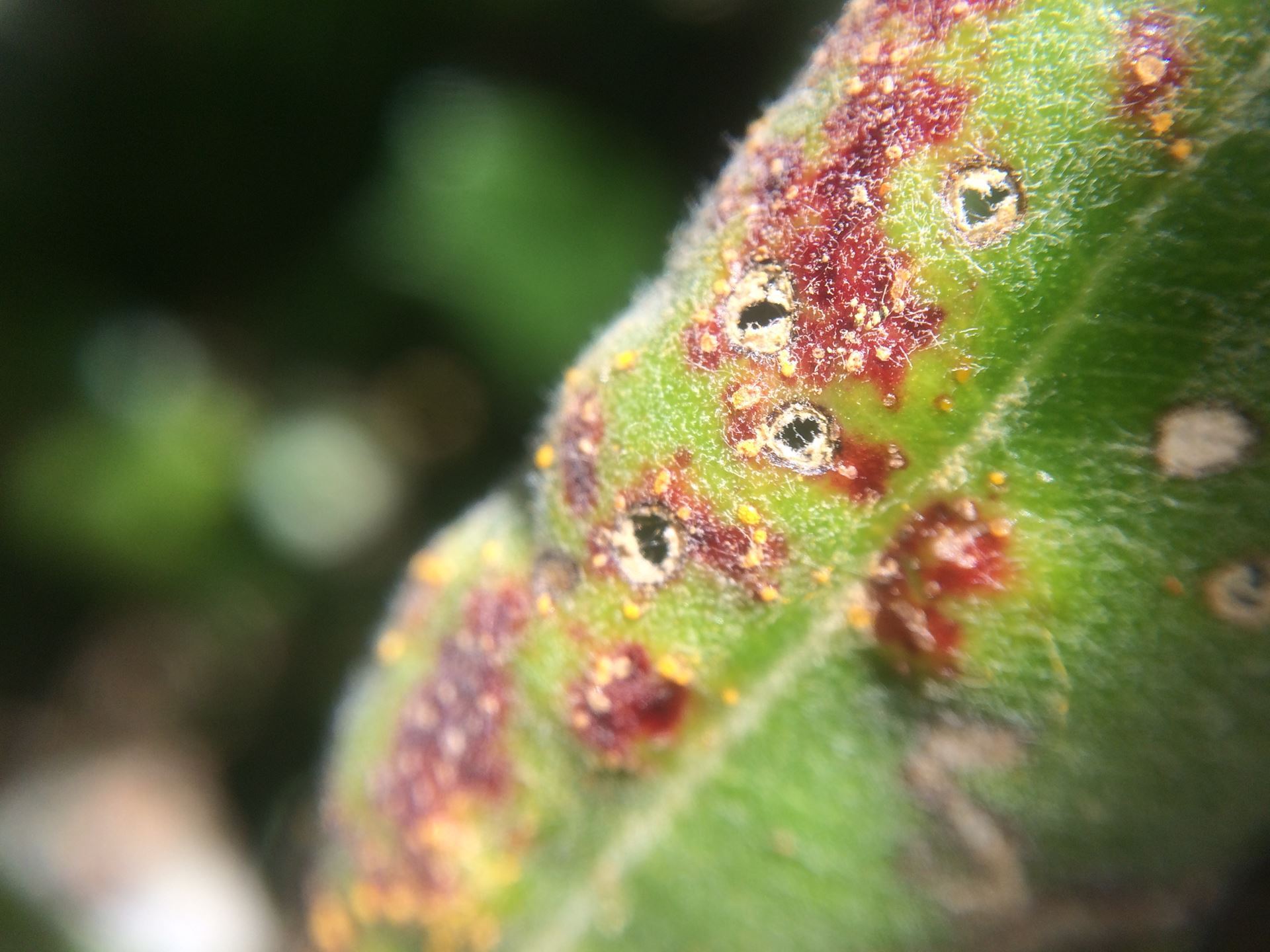The research programme
Beyond Myrtle Rust is asking the tramping and walking community to keep an eye out for the plant disease myrtle rust this summer. The fungus that causes myrtle rust infects exotic and native plants from the myrtle family, including pōhutukawa, rātā, ramarama and mānuka. The disease is most likely to be seen when the weather is warm and wet. If you find myrtle rust while out and about, please report the find on
iNaturalist.
How to spot it
Myrtle rust looks like pustules of rust-coloured pollen. The disease is most commonly found on new growth, including young leaves, stems, buds and flowers. When the infected growth starts to die, the bright colour of the pustules fades. Once the new growth dies, the plant can look singed around the edges.
Other plant diseases can look a little like myrtle rust, so the best indicators are 1) the yellow pustules and 2) the host plant. Myrtle rust only infects plants from the Myrtaceae family.

How to report myrtle rust
To report a suspected case of myrtle rust, you can download the iNaturalist app onto your phone or make an account on a laptop or desktop. Then follow these steps:
- Take a photo of the plant – but don’t touch the diseased area!
- Upload photos of the infected plant into a new observation.
- In the “what did you see?” section, type in “myrtle rust”.
- Depending on your phone’s privacy settings, you may need to add the location manually. Otherwise, the location field should fill in automatically.
It is very helpful for researchers to know what you think the host plant is. If you’d like to make a guess, please add this to the “Notes” section.
If you’d like to learn more about myrtle rust research, you can follow Beyond Myrtle Rust on Facebook, Twitter @byondMyrtleRust and Instagram @beyond_myrtle_rust.